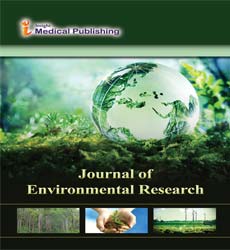Climate warming, worsening local meteorological conditions, more aerosol pollution and aerosol induced vicious cycle to the explosive increase of PM2.5 event in Beijing
Joint Event on 4th International Conference on Pollution Control & Sustainable Environment & 6th Edition of International Conference on Water Pollution & Sewage Management
July 26-27, 2018 Rome, Italy
Xiao Zhang
Chinese Academy of Meteorological Sciences, China
Keynote: J Environ Res
Abstract
Is there any connection between climate warming and local aerosol pollution? What is the mechanism of linkage? If climate warming has an impact on local meteorological conditions, how can the specific local meteorological elements, which most closely related to aerosol pollution, be extracted to quantitatively recognize two-way feedback between increase in aerosol pollution and unfavorable meteorological conditions? These have always been matters of special concern in the air pollution research. Here, we analyze long-term variations of an integrated pollution-linked meteorological index (which is approximately and linearly related to aerosol pollution), the extent of changes in vertical temperature differences in the boundary layer (BL) in Beijing and its vicinity (BIV), and northerly surface winds from Lake Baikal during wintertime to evaluate the potential contribution of climate warming to changes in meteorological conditions directly related to local aerosol pollution in this area; this is accomplished using NCEP reanalysis data, surface observations, and long-term vertical balloon sounding observations since 1960. The weather conditions affecting BIV aerosol pollution are found to have worsened since the 1960s as a whole. This worsening is more significant after 2010, with PM2.5 reaching unprecedented high levels in many cities in China, particularly in BIV. The decadal worsening of meteorological conditions in BIV can partly be attributed to climate warming, which is defined by more warming in the higher layers of the BL than the lower layers. This worsening can also be influenced by the accumulation of aerosol pollution, to a certain extent (particularly after 2010), because the increase in aerosol pollution from the ground leads to surface cooling by aerosol–radiation interactions, which facilitates temperature inversions, increases moisture accumulations, and results in the extra deterioration of meteorological conditions. This phenomenon of high aerosol pollution that have a certain degree of influence on the vertical structure of BL is also observed in most of explosive increase of PM2.5 events in BIV during winter of 2013-2017. An explosive event is defined when the PM2.5 concentrations at least doubles within several or 10 h. The root causes of the explosive event are characterized in this studies (onset by transport of aerosol pollution from the south, then radiative cooling by the accumulated aerosol layer that enhances low-level temperature inversion, then the further reduction of turbulence intensity and the height of BL to one-third of the original, then an explosive increase of PM2.5 mass event occurred). The feedback effect of BL meteorological factors was estimated to contribute >70% of such explosive increase in PM2.5 mass. In summary, an important feedback loop is found for climate warming–unfavorable local and regional weather conditions–forming and accumulating aerosol pollution–further intensifying unfavorable weather conditions–more aerosol pollution and associated explosive increase of PM2.5.
Biography
Xiao Zhang has completed his PhD from Nanjing University of China. He is the former Vice President of Chinese Academy of Meteorological Sciences, a former Director of Centre for Atmosphere Watch and Services, CMA. He has published more than 300 papers in reputed journals with h-index 57 and has been serving as an Associated Editor of Atmospheric Research and Editorial Board Member of Tellus B: Chemical and Physical Meteorology.
E-mail: zhangxiaoye_03@163.com
Google Scholar citation report
Citations : 65
Journal of Environmental Research received 65 citations as per Google Scholar report
Abstracted/Indexed in
- Google Scholar
- International Committee of Medical Journal Editors (ICMJE)
Open Access Journals
- Aquaculture & Veterinary Science
- Chemistry & Chemical Sciences
- Clinical Sciences
- Engineering
- General Science
- Genetics & Molecular Biology
- Health Care & Nursing
- Immunology & Microbiology
- Materials Science
- Mathematics & Physics
- Medical Sciences
- Neurology & Psychiatry
- Oncology & Cancer Science
- Pharmaceutical Sciences

